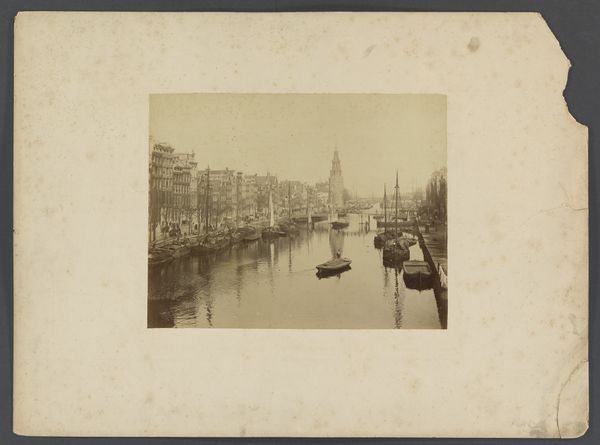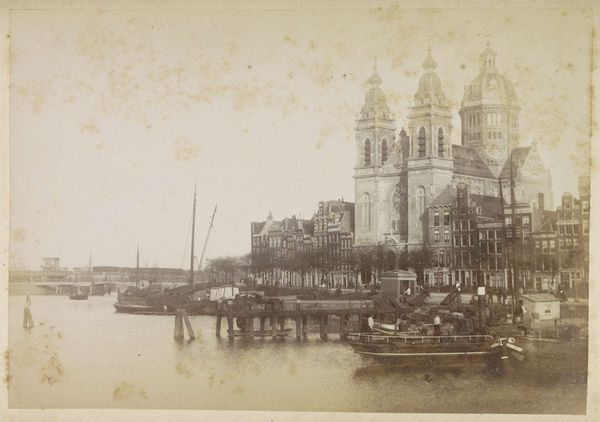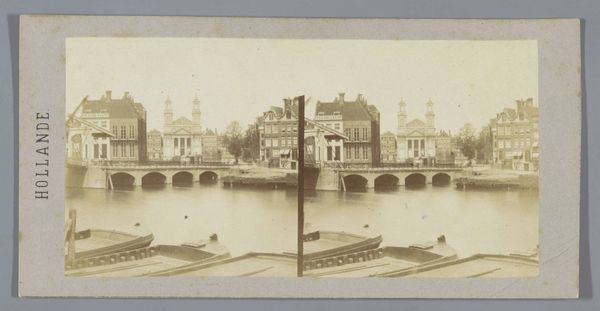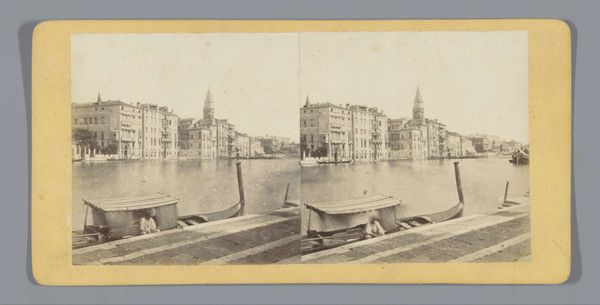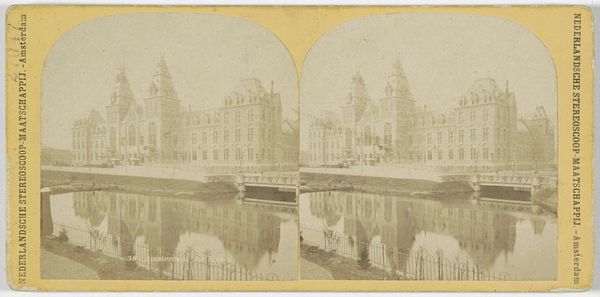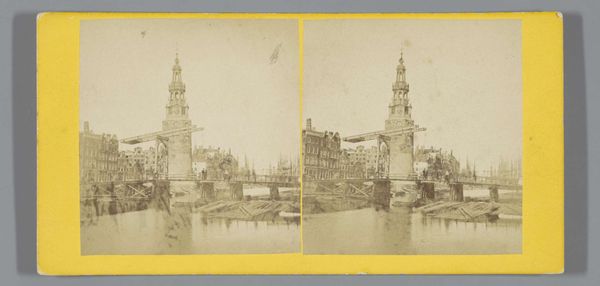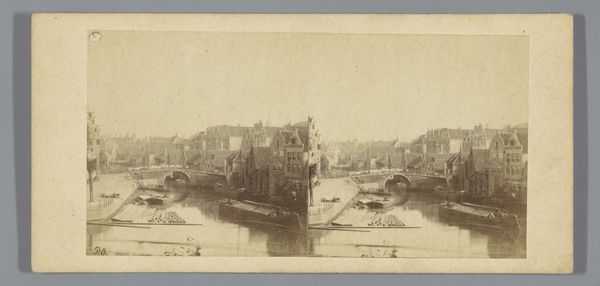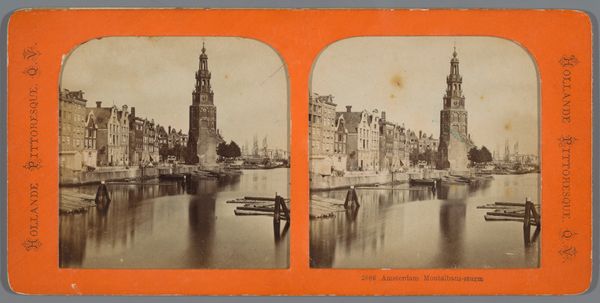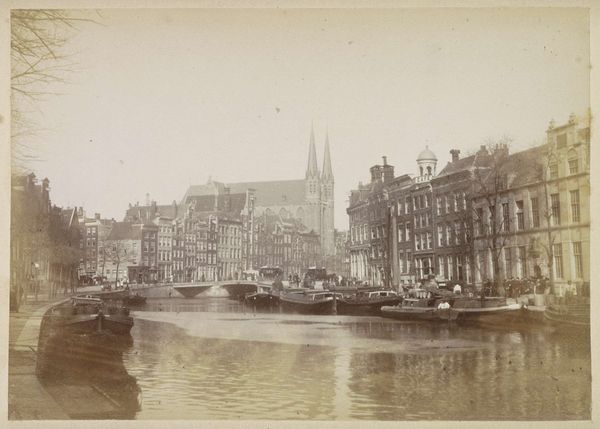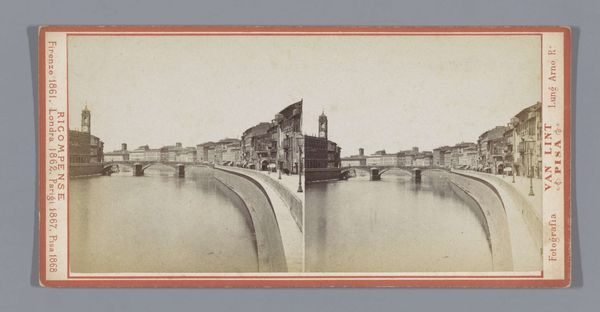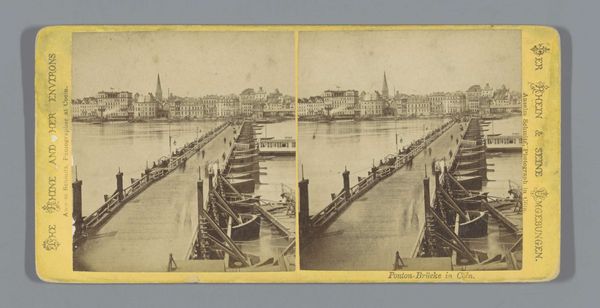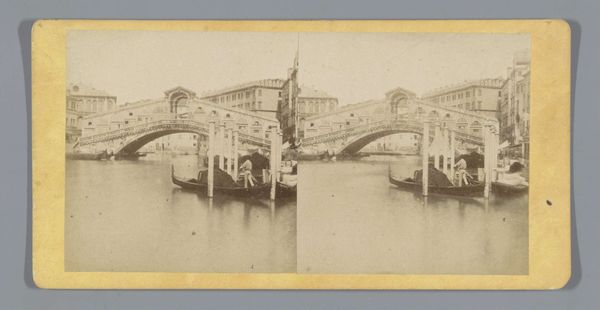
Dimensions: height 85 mm, width 170 mm
Copyright: Rijks Museum: Open Domain
Editor: This is a fascinating photograph called "Gezicht op de Johanneskerk te Stuttgart," dating roughly between 1860 and 1880 by Ludwig Schaller. The details captured here are great; I feel drawn to the quietness of the scene and how the church dominates the landscape. I wonder, how do you interpret this work within its historical context? Curator: The striking part is how photography at this time began influencing public perception of urban spaces. Here, we have a cityscape presented not just as architecture but almost as a symbol. Consider the social role of the church, not only religiously, but also as a civic landmark. Do you see how the rising church, mirrored by its reflection, presents stability? Editor: It does, a solid structure in an otherwise changing world. The choice of perspective also gives the Church authority within the town. But photography was so new then. How did it change public perceptions of art? Curator: Early photography often imitated painting, legitimizing itself by adopting painterly styles. Notice how this photograph uses soft focus and tonal gradations to emulate popular styles such as Pictorialism, thereby positioning photography within accepted artistic norms. Can you see how such decisions shaped early art markets and tastes? Editor: I see it now. The church, the photograph, both are asserting their legitimacy in a world that questions tradition. Curator: Exactly! It also speaks to the rise of civic pride and the ways that cities branded themselves using images like these to shape their public image. Editor: So, the image isn't just documenting a place but actively constructing an idea of it, through social values? It’s like early advertising. Curator: Precisely. It invites us to consider the agency embedded in photographic representation during this transformative period in art history. Editor: That gives me a completely new perspective on how to view photography and its cultural influence. Thank you. Curator: And it also reminds me of the powerful role imagery plays in defining public sentiment and reinforcing societal structures even today.
Comments
No comments
Be the first to comment and join the conversation on the ultimate creative platform.
